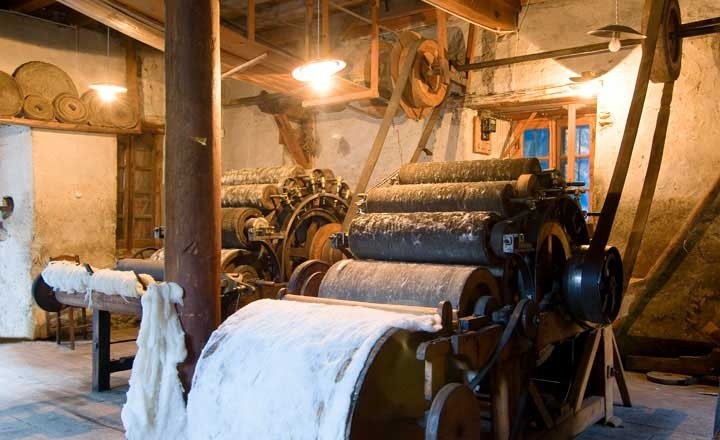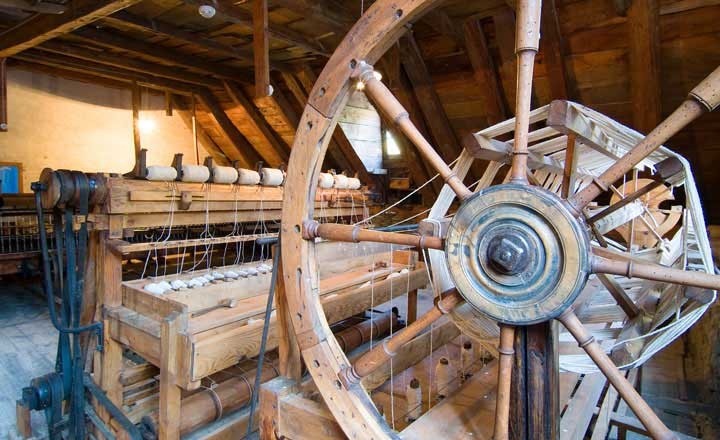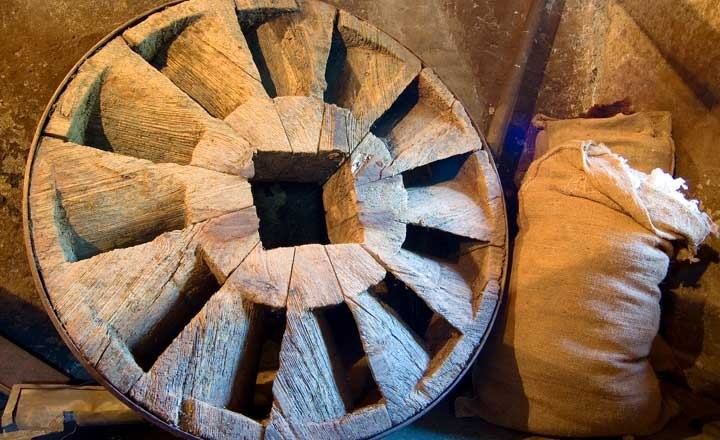

Vielha’s Fàbrica dera Lan – literally, the wool factory - is a typical example of the small-scale textile concerns that were established during the latter half of the 19th Century on both sides of the central Pyrenees. The factory was built in the late 1800s by Rafael Portolés Lafuste (1858-1936), a resident of Vielha who had learnt the trade in France, from where his wife’s family originated. For the community of the Val d’Aran, the building of the factory represented a step towards modernisation, and lessened the domestic workload borne by the women of the valley.
Inside the Fàbrica dera Lan, visitors can see how machinery powered by the river Nere was used to card the wool. Water was channelled along a 200-metre headrace, then stored in a millpond so that its flow could be controlled to power the waterwheel and drive the machines.
Jusèp Portolés Fontà (1904-1987), Rafael Portolés Lafuste’s son, continued to run the mill, making its output his sole source of income. Woolmaking continued until the floods of 1963 destroyed the mill’s headrace; not for the first time. From this time onwards, the mill’s machinery was powered by electricity. However, production declined over time until the business was finally forced to close down, in the 1970s. Since then, it has survived the passing years and the pressures of urban development, thanks mainly to the tenacity of one person with a sentimental attachment to the mill, Isabel Vidal, Jusèp Portolés Fontà’s widow.
In 1999, the Conselh Generau dera Val d’Aran decided to acquire and restore this fascinating piece of industrial heritage, in order to turn it into a living witness to the Val d’Aran’s recent history. The mill’s machinery turned raw wool into yarn that could be knitted by hand. Clean, dry wool was brought to the mill from all over the valley. The bales of wool were weighed on scales, and the number of skeins to be produced, as well as the thickness of yarn required, was agreed upon.
The first stage of the process, which involved three machines, took place on the ground floor. First, a machine known as el diable (“the devil” – because of its grim accident record) ripped open the bales and separated the wool into tufts. Next, the opening carder combed these tufts into batting, or nappe, which was often used to make quilts and mattresses. Finally, the strand carder prepared the wool that was to be made into yarn, separating the batting from the opening carder into fine strands, which were rolled on small metal cylinders.
On the top storey of the mill, three more machines were used to complete the spinning process. The mule-jenny stretched and twisted the yarn and then, after a pause, rolled it onto a spindle. This machine was operated by one person, who had to watch it closely at all times: if a single strand of yarn snapped, the machine had to be stopped immediately so as not to ruin the whole batch. The twister was used to twist the yarn and roll it on a bobbin, a cone or a spindle, depending on the quantity and thickness of yarn desired. The skein-making machine concluded the process, giving the yarn a final twist and making up the skeins. An iron bar, attached to one of the wooden beams in the ceiling, was used to make it easier to twist the skeins.


